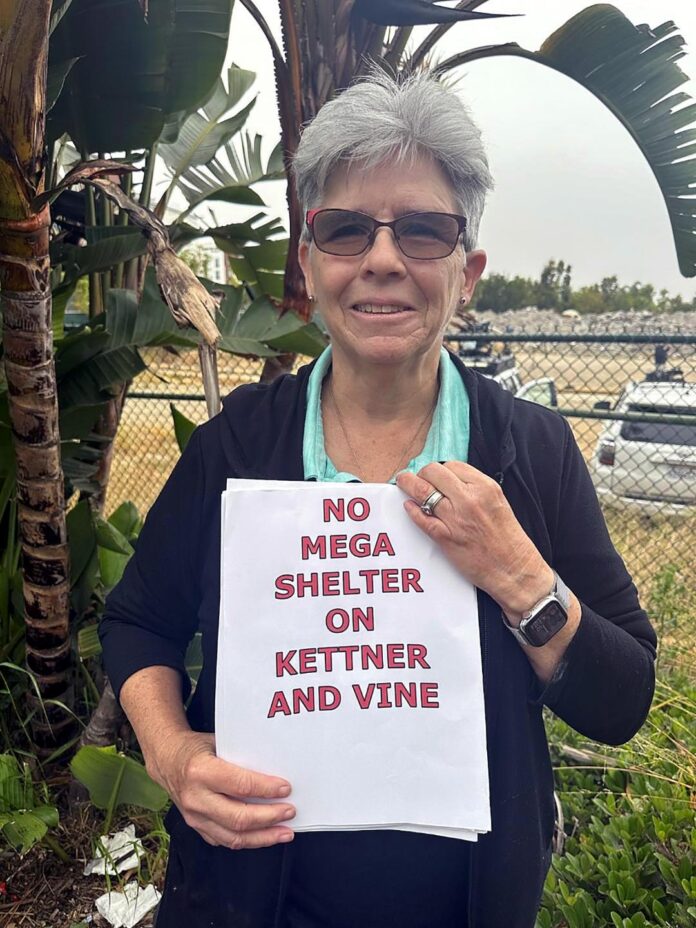Four Closed Door Sessions for the 1,000 Person Homeless Facility and Still No Community Input
Todd Gloria, the current mayor of San Diego has gone on record during a recent interview with the “Voice of San Diego” that there is no reason for community input on a 1,000-person homeless facility to serve a very diverse population with numerous mental health, physical and personal challenges. Obviously, he believes he doesn’t need to report to the taxpayers who will foot this expensive bill.
After four closed-door city council discussions of a proposed lease with the owner of the warehouse Gloria’s eyeing for the shelter, the mayor and Council President Sean Elo-Rivera released a joint statement saying Gloria will request a public hearing – and that Elo-Rivera, who has publicly said he isn’t necessarily on board with the shelter pitch, “has committed to efficiently processing that request.”
Their joint statement hinted that controversial deal terms that council members previously rejected in closed-session briefings have improved.
However, the public at large isn’t being allowed to see the lease agreement and the logic of how this 1,000-person homeless facility will effectively serve the population that is very diverse with numerous mental, physical, and personal challenges. Combining a population of people with drug and alcohol addictions with mental health issues is dangerous. Then you add abused women, families with children with individuals who don’t socialize well. What is the reasoning and benefit?
Now there are three combined organizations and thousands of individuals from throughout the city that say that this is insanity at its worst. Mission Hills Cares, Point Loma Cares and San Diego Neighborhoods, which totals over 5,000 residents have joined the cause against this site and constantly question why the mayor and city council members don’t allow the residents of San Diego to have a say in this decision.
The individuals involved in this grassroots effort to bring attention to this insane plan have reviewed successful programs around the country that have housed upwards of 900 people. Keys to Change that is based in Phoenix, Arizona, is on a 13-acre property with a campus setting. The Kettner and Vine Street site is 1.5 acres. The comparisons of size and facilities are obvious.
Anyone who can do the math can realize that 1,000 people on 1.5 acres means that they will be living on top of each other, like sardines. How can any sensible person make logic of this concept? It’s inhumane.
And yet, Gloria continues to to push this forward.
There are also transitional living specialists, including Scott Silverman, who challenges the logic of this site and knows that there will be serious liabilities and more taxpayer costs due to a poorly planned concept. He refers it to a prison environment and culture, which is not about rehabilitation and saving people from a life of destruction and despair.
Silverman has decades of experience in drug and alcohol rehabilitation and has exceptional clinical experience. He’s also walked in the shoes of someone who has recovered and rehabilitated himself to fully function without drugs and alcohol. There are lots of counselors, educators, and executives in the field of recovery, but the most effective ones can couple their personal experiences with their schooling and find the balance between the two.
Silverman started and operated a non-profit employment and reentry program for San Diegans who wanted to change their lives and ran Confidential Recovery. He is also the executive director of Safe Homes Coalition, a non-profit to reduce the use and sale of unused, and expired prescription drugs in medicine cabinets that are getting into the hands of youth around the country.
Silverman and other recognized transitional living specialists have been asked and have accepted the invitation to participate in this cause against the Kettner and Vine Street, 1,000-person homeless facility, based on their experience and skills. They understand that this will be a wasteful use of funds and resources that will not save people’s lives, just the opposite.
Here is one point to emphasize the City’s potential liability, in terms of lives lost and costs:
- The location of the Kettner & Vine building is next to heavy freeway traffic and the railroad is potentially a huge liability for the city, especially when one acknowledges the fact that at least some and possibly many of the residents may be emotionally unstable, under the influence of drugs or alcohol or both. 25,000 vehicles drive on Kettner daily of speeds up to 65 miles per hour.
These are some of the implications of a “Permanent” Shelter with a 35-year lease:
- By creating a “permanent” shelter with a long-term lease, the City is acknowledging that San Diego’s homeless problem is a forever problem requiring a “permanent” shelter.
- According to San Diego’s Chief Operating Officer, Eric Dargan, the city of San Diego should be getting out of the homeless business, so why would the Mayor and City Council be committing to a long-term lease for a permanent shelter? Dargan said, “My plan is to eliminate my homeless department altogether.” He also noted that “the reality is, you can’t force people into a system.” Why are we paying Mr. Dargan approximately $400,000 annually for the Mayor and City Council to do the polar opposite of what he is advising?
- It is fiscally irresponsible to commit to a long-term lease annually costing the city $1.9 million (plus four percent increase every year) plus $30-$40 million in annual operating expenses (escalating by an unknown amount annually).
To learn more and get involved to stop the Kettner and Vine Street, 1,000-person homeless facility, visit www.kettnerandvine.com.

Category: Business, Donations, Events, feature, Government, Homeless, Housing, Local News, Politics, Volunteers







